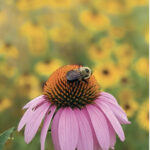Our standard well-child checkup includes asking what children are drinking. Specifically, I like to know how much juice and how much milk. I asked a mother recently how many cups of juice her toddler drinks each day. She smiled and said, “Oh Dr. Sekhar, we know you don’t like juice.”
I actually love juice, and I remember our fridge stocked with orange juice and lemonade as a child. However, most parents today are keenly aware of the recommendations to limit juice and other sugary beverage intake in children. This can be confusing in the face of labels advertising “100% organic juice,” “no sugar added,” “full-day’s supply of vitamin C,” and “1 serving of fruit.” Below, I hope to demystify what your toddler should be drinking.
Sugar-sweetened beverages include any drink with added or naturally derived sweeteners such as sucrose (table sugar), high-fructose corn syrup or fruit juice. Soda, chocolate milk, 100-percent juice, sports drinks and energy drinks all fall into this category. In the United States, children and adults are estimated to consume almost 200 calories per day from these beverages.
Sugar-sweetened beverages have been linked in many studies to increased risks for obesity, diabetes and heart disease. Note that juice is not better than soda in this case. A 12-ounce glass of orange juice has 170 calories and the equivalent of 10 teaspoons of sugar. This is the same amount of sugar in a 12-ounce soda, which has 150 calories.
When people consume sugar-sweetened beverages with a meal instead of water, the sugary drink does not make them feel full. Therefore, they tend to consume more calories overall at the meal. Additionally, sugar-sweetened beverages may have long-term effects on taste preferences and food acceptance. Toddlers accustomed to sweet beverages may find less sweet but more nutritious and filling options (vegetables and fruits) less appealing.
Parents often ask me about artificial sweeteners as an option. Many “low calorie” juices rely on the use of artificial sweeteners. There are numerous brands available including aspartame (Equal), Sucralose (Splenda) and Saccharin (Sweet’N Low). Each of these is usually several hundred times sweeter than regular sugar.
Studies have suggested that artificial sweeteners may be helpful for adults trying to wean themselves from more sugary beverages or assist with weight control. However, little information exists on these products in children. I also like to remind parents that these are relatively new products. There is limited data available on what happens to people after 50 years of consuming artificial sweeteners. To reduce juice intake in young children, parents can gradually dilute the fruit juice they offer with water rather than use artificially sweetened products.
Having a glass of apple juice each day does not mean your toddler is at risk for obesity. I try to emphasize to parents that the goal is to establish healthy habits that children will benefit from throughout their lives. I find that toddlers accustomed from the start to drinking water with meals are more likely to maintain such habits. Ideally, children should drink mostly water and milk (no more than 24 ounces per day of milk is recommended). Juice, if given at all, should be limited to 4 to 6 ounces a day.
It is equally important for parents to model healthy behaviors.
Going back to my well-child visit, one of the standard questions for parents is if their toddlers “copy” things they do around the house. The answer almost always is “yes.” Toddlers pretend to talk on the phone, pretend to clean the floor, pretend to cook dinner. Your children will also want to drink what you are drinking.
So, I do recommend parents refrain from having soda at the dinner table, offering water instead. What we do as parents usually sends a stronger message than what we say.
Dr. Deepa Sekhar is a pediatrician at the Penn State Milton S. Hershey Medical Center.






